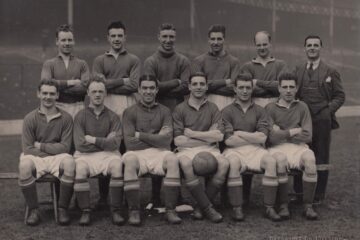
Alfred Pious Charles was born in Trinidad & Tobago, 11 July 1909. He received his prestigious royal nickname from a 1931 match report when in 1931 the Touring Trinidad & Tobago national team played British Guiana: ‘Playing at centre-half. He shone like a beacon in that position and so amazed the Guianese that they christened him “King Charles”.
Alfred was very highly regarded in his school days at Newtown Boys’ RC – he was head and shoulders above other boy footballers in Port of Spain. In 1929 he joined the Port of Spain Football League side, Everton FC. In his first season there, Everton captured the FA Cup. The glory days carried on with Everton winning the quadruple three years on the run from 1930 to 1932, the Port of Spain Football League & FA Cup, Sperling Cup & the Wincairns Trophy. The club also won the McKinney Cup against the Rest of the League XI on the two occasions it was staged.
In 1933, Everton was suspended from First Division and many of its stars moved on to other teams. When Alfred left Trinidad and Tobago for England in 1932, it was not for the advancement of his football career. He was actually accompanying the West Indies cricket team, acting as valet to legendary cricketer, Learie Constantine. He went on to play club cricket in the Lancashire League for Shannon.
In 1933 he returned to football with Burnley where he made his debut in the Northern Midweek League vs Preston North End at full-back. He was described as: ‘…an intelligent player who distributes the ball well and is good in the tackle and some say he would be better up front.’ However, he failed to break into The Clarets’ team so stints at Nelson FC and Darwen FC followed, Alfred finally did settle at Stalybridge Celtic in 1935 where he built up a fantastic scoring record as an ‘inside-forward. Southampton came calling and Alfred became the first black player to wear the famous red and white stripes. He struggled to make it with the Saints, making a solitary league appearance and, in January 1938, he returned to Stalybridge Celtic. Alfred’s career would end prematurely in the early 1940’s after a cartilage injury and he died in 1977. He wasn’t forgotten in his homeland, being posthumously inducted into Trinidad and Tobago’s Sports Hall of Fame in 1984.
In 1933 he returned to football with Burnley where he made his debut in the Northern Midweek League vs Preston North End at full-back. He was described as: ‘…an intelligent player who distributes the ball well and is good in the tackle and some say he would be better up front.’ However, he failed to break into The Clarets’ team so stints at Nelson FC and Darwen FC followed, Alfred finally did settle at Stalybridge Celtic in 1935 where he built up a fantastic scoring record as an ‘inside-forward.
Southampton came calling and Alfred became the first black player to wear the famous red and white stripes. He struggled to make it with the Saints, making a solitary league appearance and, in January 1938, he returned to Stalybridge Celtic. Alfred’s career would end prematurely in the early 1940’s after a cartilage injury and he died in 1977. He wasn’t forgotten in his homeland, being posthumously inducted into Trinidad and Tobago’s Sports Hall of Fame in 1984.



